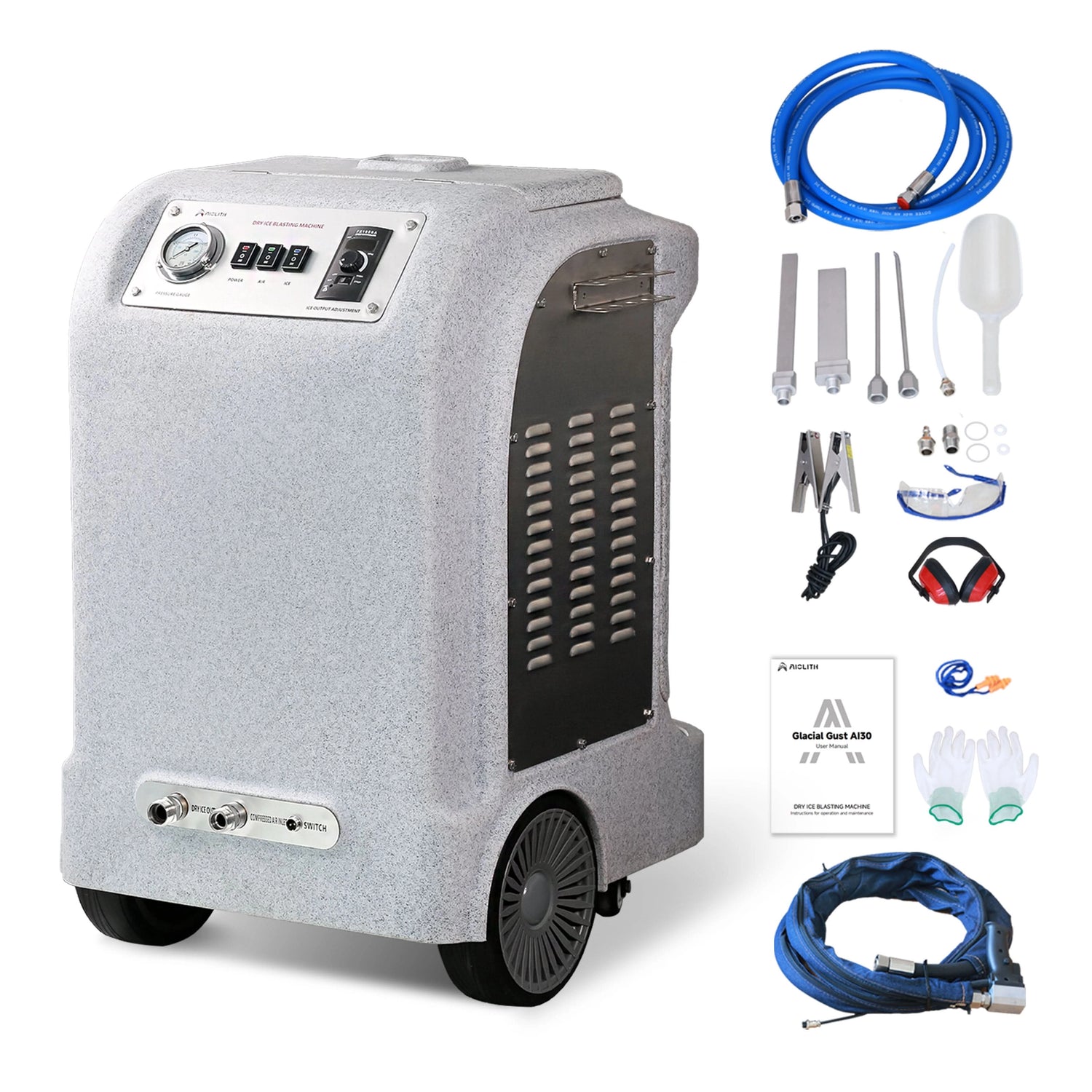Floor Scrubber Maintenance: Complete Guide to Maximize Performance and Longevity (🎧 Listen Now)
Share
Maintaining a floor scrubber is essential for keeping facilities clean, extending the machine’s lifespan, and ensuring consistent cleaning results.
A well-maintained scrubber not only saves money on repairs but also improves productivity and safety in commercial and industrial environments. In this detailed guide, we share proven practices for effective floor scrubber maintenance, covering daily, weekly, and long-term strategies.
Understanding the Importance of Floor Scrubber Maintenance
Floor scrubbers are built to handle heavy-duty cleaning tasks, but without proper care, their performance declines. Regular maintenance delivers several key benefits:
- Prolonged machine life by reducing wear and tear.
- Lower repair costs through early detection of issues.
- Better cleaning efficiency with optimal water flow and brush performance.
- Safer operation by preventing leaks, malfunctions, or electrical failures.
Preventive care reduces downtime and ensures smooth cleaning operations across all floor types.
Daily Floor Scrubber Maintenance Routine
1. Empty and Clean Recovery Tank
After each use, empty the dirty water tank completely. Rinse it thoroughly to avoid foul odors, bacterial growth, and sediment buildup. Promptly remove any rust from the water tank. If a cleaning agent is used, ensure the inner walls of the tank are washed clean and wiped dry with a cloth afterward.

2. Flush Solution Tank
Detergent residue in the solution tank can clog lines and pumps. Rinse the tank daily with clean water to keep the system clear.
Caution: When cleaning, please be careful to prevent water from entering the motor through the water level float, which can cause damage to the machine.
3. Inspect and Clean Squeegee Assembly
The squeegee assembly is vital for drying. Please remove debris and wipe the blades to prevent them from rotting and affecting future use and check for cracks or uneven wear. Replace blades when streaking occurs.

4. Remove and Rinse Pads or Brushes
Brushes and pads collect debris, hair, and dirt. Remove them daily, rinse thoroughly, and let them dry before the next use to prevent mildew.
5. Check Battery Charge
If your scrubber runs on batteries, charge them fully after every shift. Avoid letting batteries discharge completely to maintain battery health.
Weekly Floor Scrubber Maintenance Tasks
1. Inspect Battery Connections
Check battery terminals for corrosion and ensure cables are tight. Clean terminals with a damp cloth and apply protective spray if needed.
2. Rinse and Check Filters
Solution filters and vacuum filters should be inspected weekly. Clean them to prevent blockages that reduce suction and water flow.
3. Examine Hoses for Blockages or Leaks
Inspect all hoses for cracks, leaks, or clogs. Replace damaged hoses immediately to avoid operational downtime.
4. Lubricate Moving Parts
Lubricate wheels, axles, and joints regularly to reduce friction and extend service life.
Monthly Floor Scrubber Maintenance
1. Inspect Electrical Connections
Loose or frayed wires can cause operational failures. Conduct a monthly inspection to tighten and replace damaged wiring.
2. Test Vacuum Motor Efficiency
Ensure the vacuum motor provides strong suction. Weak suction often signals clogged lines or motor wear.
3. Rotate or Replace Brushes and Pads
To achieve even wear, rotate brushes monthly. Replace them when bristles are too short or pads become thin.
4. Inspect Drive Mechanisms
Check belts, drive motors, and gear assemblies for unusual noise or wear. Address problems early to avoid costly replacements.
Long-Term Floor Scrubber Maintenance
1. Perform Deep Cleaning
Every few months, conduct a deep clean of the entire machine. Remove buildup from hidden areas, including under the solution tank lid and inside recovery compartments.
2. Schedule Professional Servicing
Annual servicing by certified technicians ensures the machine operates at peak efficiency. Professionals can detect issues not visible during routine checks.
3. Monitor Usage Hours
Track machine usage to schedule timely replacements for consumable parts such as brushes, squeegees, and filters.
4. Update Software on Smart Scrubbers
For advanced scrubbers with digital controls, ensure firmware updates are installed to optimize performance.
Proper Storage of Floor Scrubbers
Storing your scrubber correctly is just as important as cleaning it.
- Always park in a dry, well-ventilated area.
- Avoid freezing temperatures that can damage water systems.
- Disconnect the battery if storing for extended periods.
- Keep the squeegee raised to prevent warping when not in use.
Common Floor Scrubber Problems and Solutions
- Streaks on the floor – Replace or adjust squeegee blades.
- Weak suction – Clean recovery hoses, filters, and vacuum motor.
- Low water flow – Check for clogs in the solution system or damaged pumps.
- Battery not holding charge – Inspect electrolyte levels or replace old batteries.
Best Practices for Extending Floor Scrubber Life
- Train operators to handle the machine correctly.
- Use recommended cleaning solutions to prevent chemical damage.
- Replace consumables promptly instead of overusing them.
- Keep a maintenance log for scheduled checks and repairs.
Conclusion
Consistent floor scrubber maintenance ensures efficiency, reduces downtime, and extends the life of your machine. By following daily, weekly, monthly, and long-term care routines, facilities can enjoy reliable performance and lower costs. Treating your scrubber as an investment means giving it the attention it deserves to keep floors spotless and operations smooth.
If you have any questions, please feel free to contact us in the comments, and the Aiolith technology team will answer them for you free of charge.

